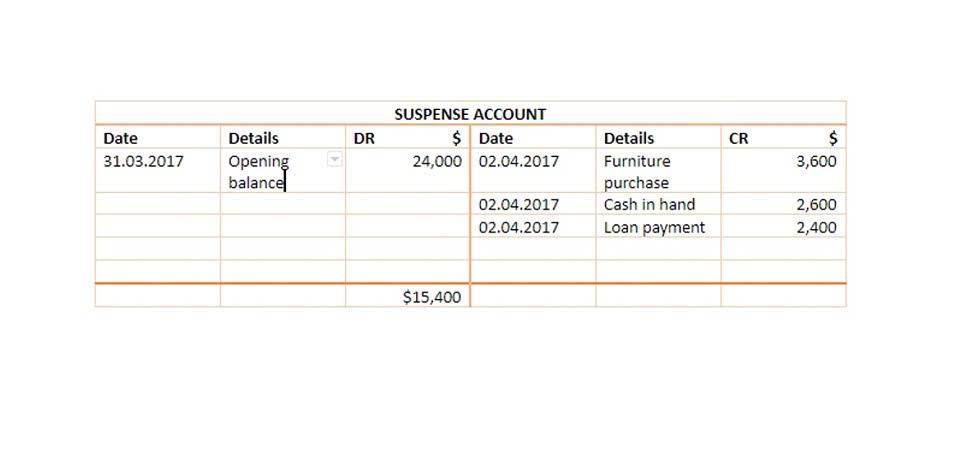
There are different ways of tracking transactions in a petty cash book. Some organizations use a separate cash register for the petty cash, and others just track the transactions on ordinary receipts or invoices. Another entry to petty cash is not made unless the firm wants to increase or decrease the fund above or below $100. The custodian of the petty cash fund is in charge of approving and making all disbursements from the fund. Although it would be preferable if all disbursements were made by check and all receipts were deposited intact, most firms usually maintain a small amount of cash on hand for miscellaneous expenditures.

Ask a Financial Professional Any Question
Role-playing scenarios and hands-on exercises can enhance the learning experience, making it more likely that employees will retain the information and apply it in real-world situations. Cash over and short scenarios often stem from a variety of operational mishaps. Human error is a frequent contributor, with cashiers sometimes entering incorrect amounts into registers or giving improper change. This is particularly common in high-volume sales environments where the pace of transactions can lead to oversights. Additionally, misinterpretation of currency denominations, especially in countries with similar-looking banknotes or coins, can result in cash drawer imbalances. Cash management is a critical aspect of financial operations for any business.

Cash versus Debit Card
Debit your cash short and over account in your journal entry by the amount of cash short. Alternatively, credit your cash short and over account by the amount of cash over. In the example, debit your cash short and over account by $10 to record the cash short amount. Over and short—often cash over short account called “cash over short”—is an accounting term that signals a discrepancy between a company’s reported figures (from its sales records or receipts) and its audited figures. The term also is the name of an account in a company’s general ledger—the cash-over-short account.
How to Journalize Petty Cash Replenishment

There is no need to make an entry to the petty cash account because it still shows a balance of $100. Entries are needed to (1) establish the fund, (2) increase or decrease the balance of the fund (replenish the fund as cash is used), and (3) adjust for overages and shortages of cash. The culmination of diligent cash management practices is often reflected in the audit process. When auditors assess a company’s financial records, cash over and short instances must be transparently reported. This transparency is not merely a matter of regulatory compliance but also a testament to the company’s commitment to financial accuracy. Auditors examine these reports to understand the frequency and magnitude of discrepancies, which can serve as indicators of the effectiveness of current internal controls.
- At this point, the petty cash box has $75 to be used for small expenses with the authorization of the responsible manager.
- A negative result represents a cash short amount, while a positive number represents a cash over amount.
- In any given month, a custodian will make various disbursements from the petty cash fund.
- On the other hand, if its balance is on the credit side, it will be presented as miscellaneous revenue instead.
- A cash short journal entry records any discrepancies between the amount of cash expected in your business’s accounts and the amount actually present.
- Note that the entry to record replenishing the fund does not credit the Petty Cash account.
What is your current financial priority?
The total amount of purchases from the receipts ($45), plus the remaining cash in the box should total $75. As the receipts are reviewed, the box must be replenished for what was spent during the month. The journal entry to replenish the petty cash account will be as follows.
Cash Shortage Journal Entry Example

Any discrepancy should be debited or credited to an account called Cash Over and Short. The Cash Over and Short account can be either an expense (short) or a revenue (over), depending on whether it has a debit or credit balance. As this petty cash fund is established, the account titled “Petty Cash” is created; this is an asset on the balance sheet of many small businesses. In this case, the cash account, which includes checking accounts, is decreased, while the funds are moved to the petty cash account.
How to record petty cash journal entries?
A key component of this framework is the segregation of duties, which ensures that no single individual has control over all aspects of a financial transaction. This division of responsibilities reduces the risk of errors going undetected and deters fraudulent activities. Credit, or decrease, your cash account by the amount by which you must replenish the petty cash account in the journal entry. Subtract the amount by which you need to replenish the account from the total amount of your vouchers. A negative result represents a cash short amount, while a positive number represents a cash over amount. Thus, this account serves primarily as a detective control—an accounting term for a type of internal control that aims to find problems, including any instances of fraud, within a company’s processes.
- The cash short/over account is an expense account in the income statement of the business.
- For example, when you sell $100 worth of merchandise to customer “a”, debit sales for $100 and credit cash for $100.
- Inaccuracies in this stage may be due to rushed counts, distractions, or simple miscounts.
- In this case, the cash account, which includes checking accounts, is decreased, while the funds are moved to the petty cash account.
Only when the fund is reimbursed, or when the end of the accounting period arrives, does the firm make an entry in the journal. In all cases, the amount of the purchase using petty cash would be considered to not be material in nature. Recall that materiality means that the dollar amount in question would have a significant impact in financial results or influence investor decisions. At the end of the month, assume the $100 petty cash fund has a balance of $6.25 in actual cash (a five-dollar bill, a one-dollar bill, and a quarter). Frank, who is the responsible person, has been filling out the voucher during the month, and all the receipts are stapled to the voucher.
- As we have discussed, one of the hardest assets to control within any organization is cash.
- They may also review surveillance footage or electronic transaction logs if available.
- But understanding how to record this type of journal entry is essential for properly tracking and balancing your finances.
- The cash over and short account is an excellent tool for tracking down fraud situations, especially when tracked at the sub-account level for specific cash registers, petty cash boxes, and so forth.
- These errors are compounded when there is a lack of standardized procedures for counting and recording cash amounts.
- After almost a decade of experience in public accounting, he created MyAccountingCourse.com to help people learn accounting & finance, pass the CPA exam, and start their career.
Cash Over and Short reconciles what is in the cash drawer vs. what the cash register record says should be in the cash drawer. Assume the same situation except that I receive $94 instead of $96 for the sale. Now cash is debited for $94, the sales account is credited for $95, and cash over and short is debited for $1. As cash is spent from a petty cash fund, it is replaced with a receipt of the purchase.
